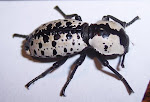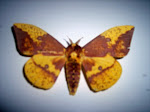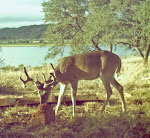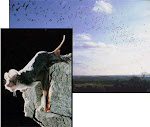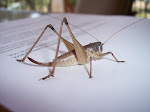Issue 3- July 19, 2009 Raccoons
Well, GOOOD MORNING Mystic Shores! That probably reminds Fred and Tom of Adrian Cronauer, but those of you who weren’t in country in ’65 won’t have a clue as to what I’m talking about. Anyway, last night I decided to write this issue of ‘Our Creatures’ about my favorite rascal, the Raccoon. Just for kicks I thought I’d set out my large live trap, bait it with a little peanut butter, and see if I can get a recent picture for the article. As soon as the sun comes up, I’ll know if I caught one or not. Chances are pretty good, since there are so many coons moving up and down the river and I haven’t put out the trap in a long while. Need to get that coffee in me first, however, because raccoons are tough, scrappy little fighters and I need to be alert when I release it. An angry ‘coon might just decide to take a bite out of my ankle for inconveniencing him.
Well, sun’s up and the raccoons came and left, without getting caught this time. They really are clever little scavengers and can reach into tiny little spaces with their front paws and grab things, even though they don’t have opposable thumbs. In this case, they reached between the wires of the live trap and took the bait without going inside. So, no close-up pictures this issue. I’ll substitute a picture I took with my trail camera in the backyard a couple of months ago.
Note that there are five raccoons in the picture. You’ll also note that they look like they are in pretty good shape and their fur is full and healthy. Due to this drought we’re having, the raccoons now look scruffier and thinner. They, along with a lot of the other wild animals, are stressed now because of the prolonged heat and lack of moisture.
The common raccoon (Kingdom; Animalia, Phylum; Chordata, Class; Mammalia, Order; Carnivora, Family; Procyonidae, Genus: Procyon, Species: P. lotor) is a medium sized mammal originally native to deciduous North American forests. The first recorded written record of the raccoon was actually done by Christopher Columbus at the end of the fifteenth century. In the centuries since, the raccoons have proven so adaptable that they are now found throughout most terrains in North America, and have been introduced into Europe and Japan.
Raccoons are nocturnal omnivores. They can eat most anything and their diet consists of roughly a third plant matter (acorns are a favorite), a third invertebrates (insects and grubs mostly) and a third vertebrates (fish, for example). They frequently travel along the edges of waterways searching for food and their tracks are easily seen in the mud down by the edge of Canyon Lake or the Guadalupe River.
The average coon in the Hill Country might go 10 pounds but their weights can vary widely. This variation is not only between individuals but also is very much dependent upon the time of the year. During a ‘normal’ year, the raccoons might loose half their body weight over the winter. Males are about a fifth larger than females. All, however, have a distinctive ‘mask’ that contributes to their reputation of being inquisitive little bandits.
The females live their lives in a relative small territory, probably a square mile or two in our country. The males extend into larger areas, particularly during the mating season in the winter. They often share ‘latrines’ in overlapping territories and these markers can be found readily as you walk around the peninsula. I have noted many stumps or rock outcroppings where they leave concentrations of urine and feces. Reportedly, the raccoons meet at these areas for collective eating, sleeping and playing. After breeding in February and a two month gestation period, the females have between 2 and 5 young, which they care for until the fall. Tree hollows in old oaks and rock crevasses are favorite den sites and of course we have an abundance of both here at Mystic Shores.
Raccoons are good climbers and have the unusual ability (for mammals, anyway) of being able to climb down a tree trunk headfirst. To do this, they rotate their hind feet so they are pointing backwards. They can sprint up to 15 miles per hour but their body shape is not conducive to being fast runners. They are, however, excellent swimmers and can stay in water for hours, if necessary.
They have five digits on their paws and all carry non-retractable claws. Their sense of touch is very highly developed and has been studied extensively.
Raccoons are quite vocal and communicate with one another frequently. I often hear them chittering away while sitting on my back porch at night. They reportedly have 13 identified calls, seven of which are used between the mother and kits. The sound I can identify most readily is the birdlike twittering of young ones.
The life expectancy of raccoons in the wild is only 2 to 3 years, and run-ins with cars account for many, if not most, of the deaths.
The most frequent natural cause of death in raccoons is distemper and this particular pathogen does not affect humans. However, they can also carry rabies, which is a potentially lethal disease carried in raccoons’ saliva and transmitted through their bites. There is only one human fatality that has ever been reported after transmission of the rabies virus from raccoon. Nevertheless, if any abnormal behavior or appearance is noted in an animal, the U.S. Forest Service recommends that we notify the proper authorities, such as an animal control officer from the local health department. Since healthy animals, especially nursing mothers, will occasionally forage during the day, daylight activity is not a reliable indicator of illness in raccoons.
Barbequed raccoon might not sound too appetizing but it was a rural staple in much of the south for many years. Since we generally think of them as varmints now, the idea of eating them is no longer part of mainstream culinary thinking.
It wasn’t too long ago that a farm boy could make good spending money off of ‘coons with a decent dog and a 22 rifle. Through the seventies and eighties, it was not unusual to bring in $20 for a good pelt and millions of them were hunted. You might find it interesting to learn that Davy Crockett probably never wore a coonskin cap. Fes Parker certainly did……. I remember the film and TV series.
If you want to see raccoons here at Mystic Shores, it’s really quite simple. Just leave your trash can open after dark and flip on the garage light when you hear a racket. You’ll likely find a family of raccoons pulling apart the hefty bags and making a nuisance of themselves. Yep, they can be rascals, but they are a fascinating animal and a big part of the dynamic whirl of wildlife that surround us here at Mystic Shores.
Clay
PS I take pictures of a lot of our wildlife with trail cameras. I have infrared as well as daylight and flash versions. I have never caught a mountain lion on film, at least not here at Mystic Shores. If you see one, or if you suspect one is traveling through your property, please send me an email. I’d love to document a sighting and write up an article on it.
Click on these pictures to go directly to the article.
Followers
Blog Archive
About Me

- Clay Crum
- I'm always looking for suggestions (or photos) about other Mystic Shore wildlife. Do you know where a rattlesnake den is located? Do you have pictures of a mountain lion taken locally? Have you had interesting encounters with our wildlife? Share them with me by sending me an email or commenting on this blog.
